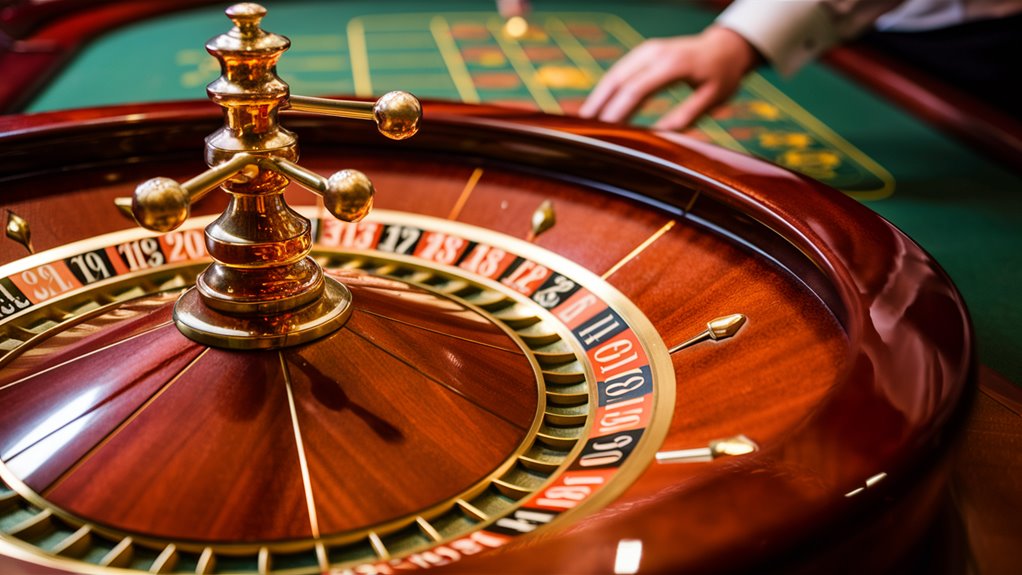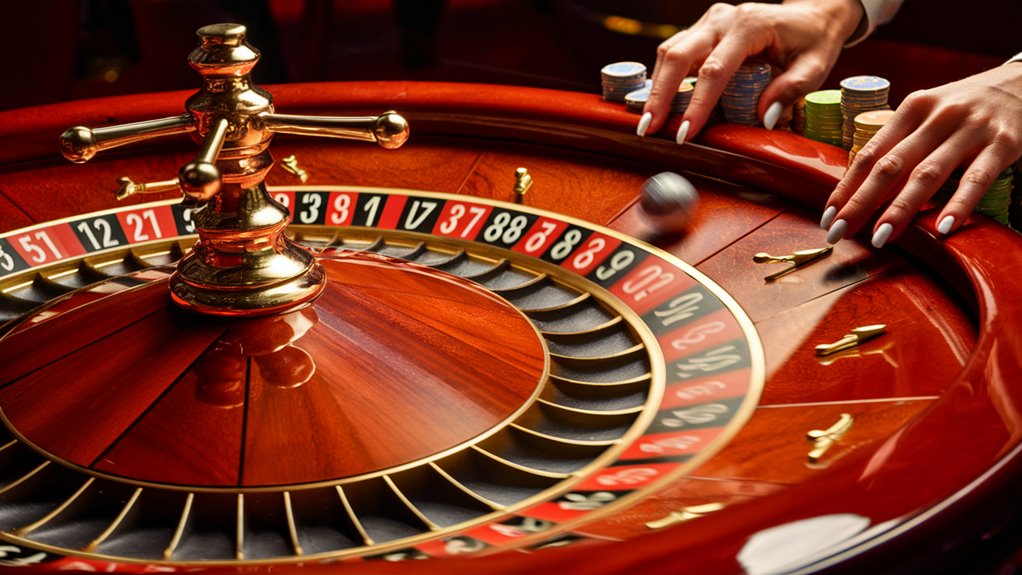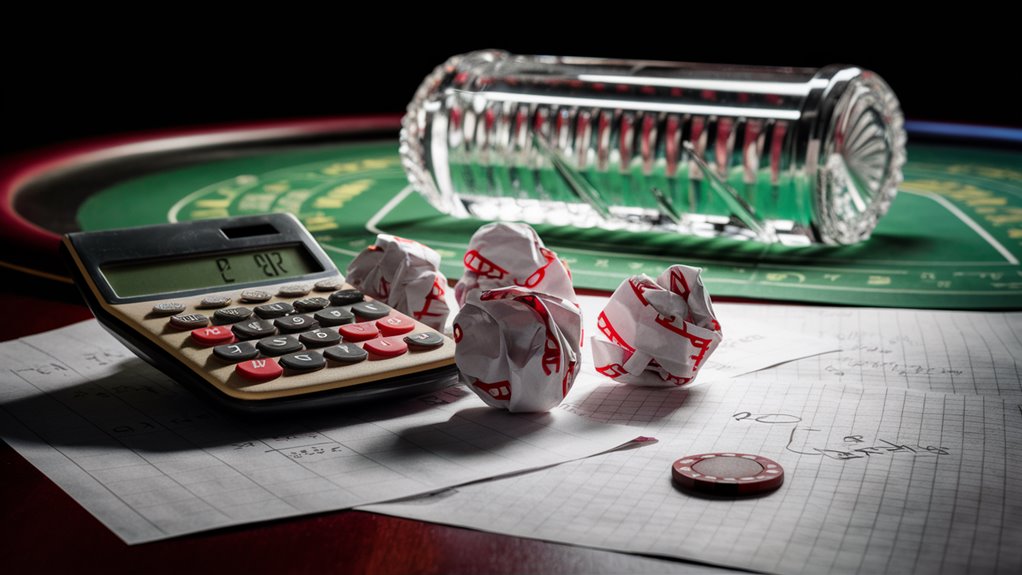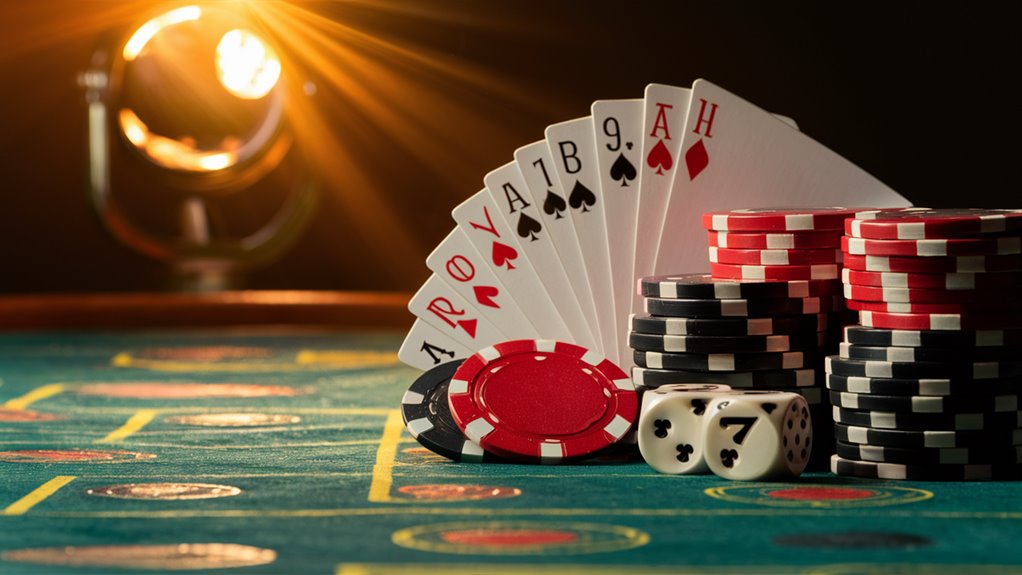The Hidden Ways of Roulette: Made Easy

Key Parts of Roulette
The real secrets of roulette lie in basic math and rules. European roulette wheels offer better odds with a 2.7% house edge, while American roulette has a higher 5.26% house edge due to the extra double-zero slot. 이 내용을 꼭 확인해보세요
Cutting Down Well-Known Betting Ways
Betting ways like Martingale and D’Alembert may look promising, but they can’t beat the casino’s built-in advantage. These growing bet styles eventually fail due to the firm house edge.
Top Cash Handling Plans
If you play roulette right, it’s about using tight cash control:
- Set bet limits before you play
- Stick to fixed bets decided before starting
- Gamble only with money you can afford to lose
- Monitor wins and losses carefully
- Set clear cut-off points for losses
Tougher Roulette Points to Think About
Roulette appears simple but involves intricate chance rules. Key considerations include:
- Checking wheel bias
- Examining betting zones
- Identifying number patterns
- Mapping probabilities
- Analyzing variance
Understanding these elements helps in setting realistic expectations and making better decisions at the roulette wheel.
The Early Start of Roulette: A Back Look
The Start and Pascal’s Role
Blaise Pascal, a prominent French mathematician, contributed to the origin of roulette in the late 1700s when he attempted to create a perpetual motion machine. This effort, although not yielding the desired outcome, led to one of the top casino games.
Growing in Paris Game Places
By 1796, roulette had established itself in the high-end game houses of Palais Royal in Paris. The complete mathematical mechanics and elegant structure drew in both high society and commoners, placing it at the core of European gaming life.
New Moves and Better Details
The introduction of the single-zero version in 1843 by François and Louis Blanc in Bad Homburg, Germany marked a key evolution in roulette’s design. This improvement enhanced the game’s odds and distinguished European roulette from its American counterpart, which retained the double-zero slot.
Name and Being Part of the Culture
The term “roulette,” meaning “small wheel” in French, derived from older games like Biribi and Even-Odd. The efforts of the Blanc brothers in Monte Carlo established it as the premier gaming venue in Europe, cementing roulette as the cornerstone of casino games. Their single-zero variant now dominates European casino floors, maintaining its allure today.
A Full Guide to Understanding Different Roulette Wheels
European vs American Roulette Wheel Builds
The evolution of roulette has produced two primary wheel formats that define casino gaming today: European and American roulette wheels. Each has distinct features that influence both probability of success and the overall gaming experience.
What the European Roulette Wheel Has
The European roulette wheel encompasses 37 numbered slots featuring numbers 1-36 and a single zero (0). This setup offers a 2.7% house edge, proving more favorable for players seeking optimal odds.
The Build of the American Roulette Wheel
The American roulette wheel contains 38 numbered slots, including an additional double zero (00). This extra compartment elevates the house edge to 5.26%, significantly impacting the probability of success.
Number Lines and Wheel Make
How the European Wheel is Arranged
The European wheel order features a strategic number arrangement creating balanced patterns in:
- High/low number pairings
- Red/black color positioning
- Even/odd number placement
The Make of the American Wheel
The American wheel order maintains design principles while incorporating the double zero. Both versions employ calculated number positioning with:
- Alternating red and black compartments
- Opposing positions for adjacent numbers
- Statistical sector distributions
Understanding these wheel types aids in formulating superior betting strategies and potentially enhancing roulette outcomes.
What Each Bet Brings for the House
A Full Look at House Edge in Roulette
European vs American Roulette House Edge
The house edge in roulette differs significantly across game variations. European roulette consistently presents a 2.7% house advantage across most bets, including straight-up bets, splits, streets, corners, and column bets, making it mathematically preferable for players.
American roulette, due to its single and double zero compartments, exhibits a notably higher house edge of 5.26% on standard bets. This variation arises from the double-zero increment.
Special Rules and How They Change the Edge
The Bonus of the En Prison Rule
The en prison rule, exclusive to European roulette, lowers the house edge to 1.35% on even-money bets. Applicable to:
- Red/Black bets
- Odd/Even bets
- High/Low selections
Bets to Stay Away From
The first five or basket bet on American roulette wheels, bearing the highest house edge at 7.89%, is strategically the weakest bet available.
Smart Moves for Players
To enhance financial outcomes, players should:
- Opt for European roulette over American styles
- Seek tables with the en prison rule
- Avoid basket bets
- Prioritize even-money bets when en prison rules apply
This detailed understanding of house edge is crucial for informed betting and sound financial strategies in roulette.
Known Betting Ways Made Clear
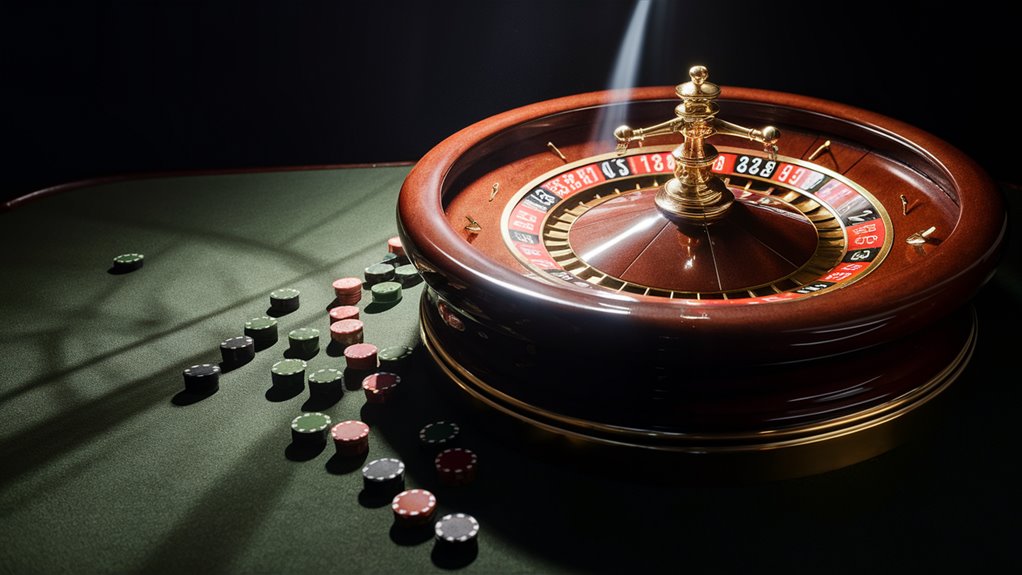
Know Common Bet Plans
Despite a consistent mathematical house edge, a variety of set betting techniques have emerged as players seek success patterns. These structured methods provide frameworks for managing bets across multiple sessions.
Deep Look at Major Betting Ways
The Martingale Way
The Martingale technique involves a Double-up bet strategy, where players double wagers after each loss. Although designed to recover past losses while gaining small wins, the strategy demands ample reserves.
The D’Alembert Plan
The D’Alembert approach offers a less aggressive alternative to Martingale by utilizing single-unit adjustments. Players progressively increase or decrease wagers by one unit, resulting in a gradual change in stakes.
Tougher Bet Lines
The Labouchere system employs a numerical line technique where gamblers:
- Calculate bets from the first and last line numbers
- Eliminate numbers after successful bets
- Add losses to the line’s end
The Fibonacci strategy follows the Fibonacci sequence, increasing after losses and retreating two steps after wins.
Looking at Risk and House Edge
Notwithstanding structural plans, these betting methods cannot counteract the underlying house advantage. Various strategies present different risk profiles:
- Martingale incurs rapid financial depletion risks
- D’Alembert progresses at a slower rate with limited recovery potential
- Labouchere’s complexity may obscure escalating losses
- Fibonacci sequences prompt substantial stake escalation
While these methodologies outline strategic gambling, inherent house edge and variance remain immutable.
Usual Chance Myths and Facts in Roulette
The Real Deal on Random Events in Casino Games
Over time, many players have adhered to incorrect beliefs about probability and outcome, leading to costly bets and flawed gaming strategies. The pervasive gambler’s fallacy persists, with players mistakenly assuming that a black result will inevitably follow several reds. However, each spin is a stand-alone event, with previous outcomes having no influence on subsequent spins.
Know House Edge and Betting Ways
No betting system can surpass the prevailing mathematical house advantage. Winning likelihood remains unaltered regardless of the utilization of escalating bets, flat wagers, or intricate structures. In standard European roulette, the house edge remains fixed at 2.7%, while American roulette reports a notably escalated 5.26% house benefit, attributed to the extra double-zero spot.
Math Chances in Roulette
The mathematical odds in roulette remain definitive and verifiable. The probability of hitting a single number is 1 in 37 (European) or 1 in 38 (American). While even/odd bets and red/black bets appear to promise a 50/50 probability, they in fact offer slightly lower odds due to the green zero slot. Identifying patterns or attempting to recoup losses is ineffective against inherent chance. Proficient roulette gaming involves understanding these mathematical principles and steering clear of misconceptions and untruths.
Spotting Biased Roulette Wheels: A Full Look
Get to Know Wheel Bias in Today’s Casinos
Minor defects in roulette wheels can potentially result in anomalous outcomes, affecting overall probabilities. Though previous players could leverage this, contemporary casinos employ sophisticated monitoring and maintenance systems, rendering bias detection exceedingly challenging.
Main Signs of Wheel Bias
Physical Signs
- Worn fret markings
- Adjustments in wheel head tilt
- Loose pocket separators
- Surface inconsistencies
What You Need for Stats Checks
- Minimum spin count: thousands
- Observing probability deviations
- Testing for statistical significance
- Analyzing patterns over time
Checking Dealer Signs
Dealer signs refer to inadvertent patterns in ball release impacting its landing. Skilled observers consider:
- Consistency of throw speed
- Ball trajectory patterns
- Spin rate variations
- Frequent impact locations
What Casinos Do to Stop This
Stops in Place
- High-level wheel maintenance protocols
- Automated monitoring tools
- Regular alignment assessments
- Statistical analysis instruments
How They Find Issues
- Automated spin tracking
- Real-time alteration alerts
- Routine equipment assessments
- Performance metric evaluations
Focus on Different Plans
Mathematically-driven gaming promises more consistent results through:
- Established cash management
- Comprehension of house edge dynamics
- Probability-driven betting schemes
- Risk assessments
Key Cash Handling Ways for Roulette Wins
Set Up Cash Basics
Prudent cash management is crucial for successful roulette gameplay. Establishing rigid loss thresholds and clear profit targets before playing ensures a methodical approach. The optimal strategy involves carrying three times your intended session bankroll, divided for comprehensive oversight.
Planned Bet Rises
Start with the minimum table wager to establish footing. Implement a regulated bet increase by raising wagers incrementally after wins, adhering to a single bet cap of 5% of ongoing capital. Revert to base wager units after losses to maintain strategy integrity. This incremental stake system enhances victory chances while minimizing risk exposure. You’re Losing Control of Your Gambling
Manage Risk and Control Play Time
Effective cash stewardship necessitates intermittent pauses following losses. Adhere rigidly to established victory-loss protocols – exit the table once thresholds are reached. The mathematical house edge remains indifferent to wagering methodologies, rendering emotional reactions ineffective. Success relies upon steadfast discipline and consistent cash management practices throughout gameplay.
Main Cash Rules:
- Define strict loss limits and profit targets
- Segment bankroll into three distinct parts
- Avoid exceeding 5% per single wager
- Depart upon achieving thresholds
- Resist emotion-driven wagers
